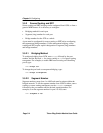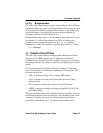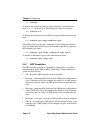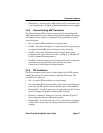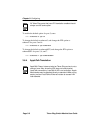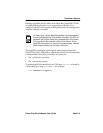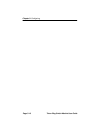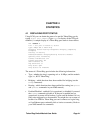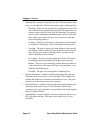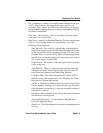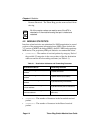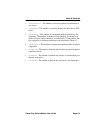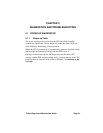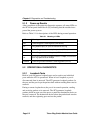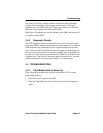
Chapter 4: Statistics
Page 4-2 Token Ring Switch Module User Guide
• Spanning Tree - the port's Spanning Tree state. This entry shows status
only; it is not selectable. The following states apply to Spanning Tree:
- Blocking - The port is not currently the designated port to the LAN
and is therefore not forwarding any packets. (This means there is
another route to that LAN and, since the Spanning Tree protocol
does not allow simultaneous redundant paths, this port is blocked.
If the other route to that LAN goes down, this port would then
begin forwarding packets.)
- Listening - The port is listening for other bridges on the network
to determine if it should go to the forwarding or blocking state.
- Learning - The port is listening for other bridges on the network
and making a table of addresses from packets that it has received.
Once the port goes to the forwarding state, it can then use the
address information it has learned.
- Forwarding - The port is the designated port for the LAN and is
forwarding packets and sending out bridge protocol packets.
- Broken - The port is not forwarding packets. Reasons include no
cable connected, no link status, the ring is not operational, or an
NMS has disabled the port.
- Disabled - The port is not configured for Spanning Tree.
• Packets Transmitted - number of packets transmitted from the port.
This entry shows status only; it is not selectable. This includes any
packets that might have experienced transmission errors. (The port’s
statistics are reset whenever the port is started.)
• Packets Received - number of good packets received through the port.
This entry shows status only; it is not selectable. Packets with
reception errors are not included, nor are packets local to that segment
that are hardware filtered.
• Small Buffers - number of buffers currently assigned to the port (see
RX_Q Overflows below). This entry shows status only; it is not
selectable.



